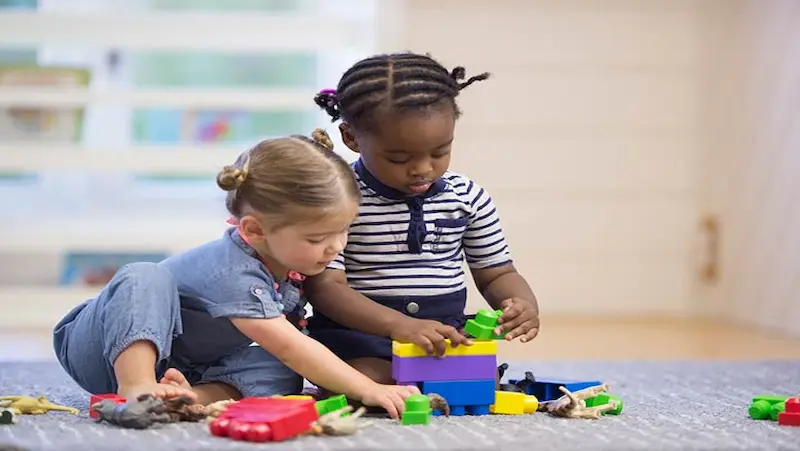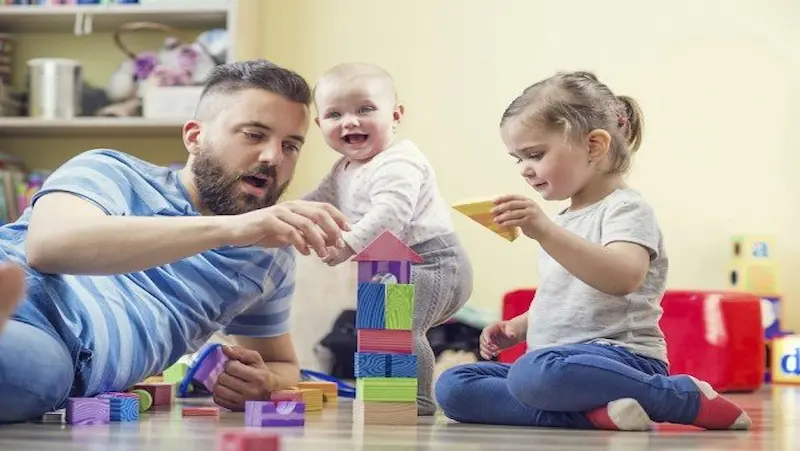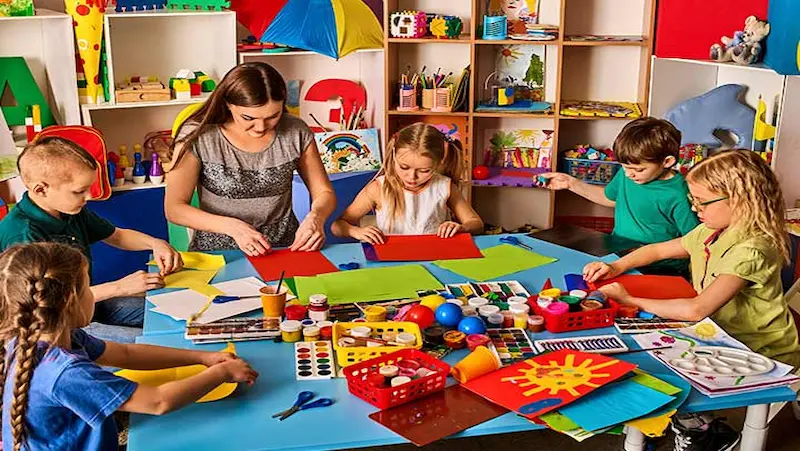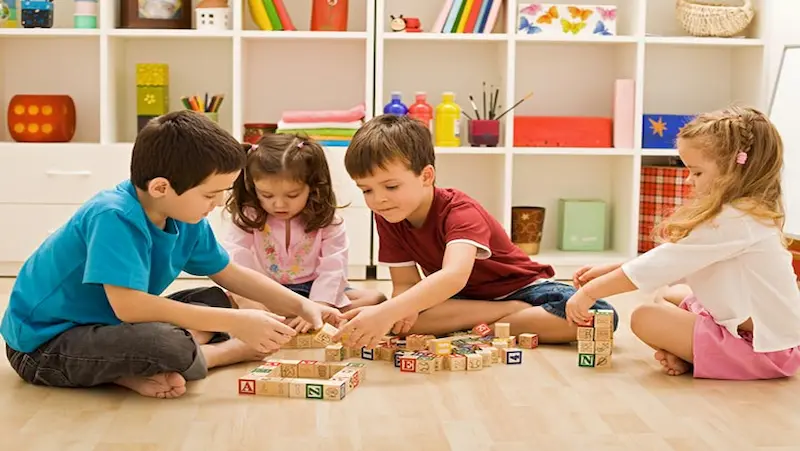In a world buzzing with constant stimuli, nurturing the young minds of our children has become more crucial than ever. As parents and caregivers, we find ourselves on a quest to discover engaging activities that not only captivate but also enhance the cognitive development of our little ones. Introducing brain-boosting activities for kids isn’t just a trend; it’s a thoughtful approach to cultivating curiosity, creativity, and critical thinking. Let’s embark on a journey where simplicity meets stimulation, where play becomes a powerful tool for shaping bright and inquisitive minds.
Table of contents
- Understanding Mental Agility
- Age-Appropriate Brain Development
- Brain-Boosting Activities for Toddlers (Ages 1-3)
- Brain-Boosting Activities for Preschoolers (Ages 4-6)
- Brain-Boosting Activities for Elementary School Kids (Ages 7-12)
- Incorporating Brain-Boosting Activities into Daily Routine
- Technology and Mental Agility
- Building a Supportive Environment
- Conclusion
- Frequently Asked Questions
Understanding Mental Agility
In the fascinating journey of a child’s cognitive development, there exists a crucial yet often underestimated skill – mental agility. Unlike the complex algorithms of artificial intelligence, mental agility in children involves the ability to think quickly, adapt to new situations, and solve problems creatively. In this blog post, we’ll explore the meaning of mental agility and uncover its significance in shaping the young minds of tomorrow.

Define Mental Agility:
Mental agility can be defined as the ability to swiftly and effectively switch between different tasks, ideas, or ways of thinking. It’s like a mental gymnastics routine where the brain seamlessly transitions between various challenges. For a child, this means being able to grasp new concepts, solve problems, and approach learning with flexibility.
Significance in Cognitive Development:
Imagine a child navigating the complex maze of information, emotions, and experiences that make up their world. Mental agility is the compass that helps them find their way. As children grow, their brains are like sponges, absorbing and processing information rapidly. Mental agility acts as the catalyst, facilitating smoother transitions between tasks and fostering a holistic cognitive development.
Contributions to Problem-Solving, Creativity, and Learning:
a. Problem-Solving:
One of the key benefits of mental agility is its role in problem-solving. Children with well-developed mental agility can analyze situations quickly, identify challenges, and generate creative solutions. This skill not only aids in academic problem-solving but also equips them to tackle real-life challenges as they arise.
b. Creativity:
Creativity thrives in minds that can explore various perspectives effortlessly. Mental agility allows children to approach situations with an open mind, encouraging them to think outside the box. This creativity extends beyond artistic endeavors; it also influences how they approach everyday challenges, fostering innovation and a love for learning.
c. Learning:
Learning is not a linear process but a dynamic journey filled with twists and turns. Mental agility ensures that children can adapt to different learning styles and environments. It enables them to absorb information from various sources, connecting the dots between seemingly unrelated concepts, and fostering a deeper understanding of the world around them.
Age-Appropriate Brain Development
Every child is unique, and so is their journey of brain development. As parents, caregivers, or educators, understanding the various stages of cognitive growth is crucial for providing the right environment and activities that foster optimal learning. In this blog post, we’ll break down the stages of brain development in children and explore how different activities can cater to specific age groups.

Early Years (0-3 years):
During the first three years of life, a child’s brain undergoes rapid development. Neural pathways are forming at an astonishing rate, laying the foundation for future learning. Simple activities like peek-a-boo, gentle touch, and soothing lullabies play a crucial role in stimulating their senses. These activities not only foster a sense of security but also contribute to the development of basic motor skills and emotional bonds.
Preschoolers (3-6 years):
Preschool years are marked by significant growth in language skills, motor coordination, and social development. Activities that encourage imaginative play, such as building blocks, finger painting, and storytelling, are excellent choices for this age group. These activities not only enhance creativity but also support the development of problem-solving skills and social interaction.
Elementary School (6-12 years):
As children enter elementary school, their cognitive abilities become more sophisticated. Educational games, puzzles, and team sports can help stimulate logical thinking and enhance their cognitive skills. At this stage, it’s essential to encourage a balance between academic and extracurricular activities, fostering a well-rounded development of both the left and right hemispheres of the brain.
Adolescence (12-18 years):
During adolescence, the brain undergoes pruning, where unused neural connections are eliminated, and important pathways are strengthened. This is a crucial period for developing critical thinking, decision-making, and self-awareness. Activities that promote independence, such as project-based learning, music lessons, or volunteering, can help teenagers explore their interests and develop a sense of responsibility.
Brain-Boosting Activities for Toddlers (Ages 1-3)
The toddler years are a magical time filled with curiosity and boundless energy. It’s during this period that a child’s brain is rapidly developing, making it the perfect time to engage in brain-boosting activities that promote cognitive growth. In this blog post, we’ll explore simple and hands-on activities designed to stimulate your toddler’s mind through sensory exploration and basic problem-solving.

1. Sensory Treasure Hunt:
Encourage your toddler’s sense of touch, sight, and exploration with a sensory treasure hunt. Fill a box or basket with various textured items such as soft fabric, rough sandpaper, smooth stones, or fuzzy toys. Let your toddler explore and discover the textures, describing each one as they touch and feel. This activity not only enhances their sensory awareness but also fosters language development as they learn new words to express the different textures.
2. Colorful Water Play:
Water play is a fantastic way to engage toddlers in sensory exploration. Fill a basin with water and add a few drops of food coloring to create vibrant hues. Provide containers of different shapes and sizes, along with safe pouring tools. Watch as your little one enjoys the mesmerizing swirls of color while developing fine motor skills and hand-eye coordination. This activity also introduces basic concepts like cause and effect as they observe the impact of pouring water into various containers.
3. DIY Shape Sorter:
Create a simple DIY shape sorter using an empty cardboard box and cut-out shapes. Cut holes in the box that correspond to different shapes such as circles, squares, and triangles. Encourage your toddler to match the shapes and insert them through the corresponding holes. This activity not only hones their fine motor skills but also introduces the concept of categorization and problem-solving as they figure out which shape goes where.
4. Nature Scavenger Hunt:
Take your toddler outdoors for a nature scavenger hunt. Create a list of simple items for them to find, such as a smooth rock, a leaf, or a twig. As they explore their surroundings, discuss the various colors, textures, and sizes of the items they discover. This activity not only connects them with the natural world but also encourages observation and vocabulary development as they describe their findings.
Brain-Boosting Activities for Preschoolers (Ages 4-6)
Preschool is a crucial time in a child’s development, laying the foundation for future learning and cognitive abilities. Engaging young minds in stimulating activities not only fosters creativity but also enhances cognitive skills that are essential for their growth. In this blog post, we’ll explore five brain-boosting activities tailored for preschoolers aged 4-6, emphasizing the significance of imaginative play and basic educational games.

1. Imaginative Play:
Imagination is a powerful tool that fosters creativity and problem-solving skills in young children. Encouraging preschoolers to engage in imaginative play helps them develop cognitive abilities by exploring new ideas and scenarios. Provide them with costumes, props, and open-ended toys that spark their creativity. Whether they’re pretending to be a superhero saving the day or a chef cooking up a storm in their play kitchen, imaginative play enhances cognitive flexibility and social skills.
2. Storytelling and Puppet Shows:
Narrative skills play a crucial role in cognitive development. Storytelling not only enhances language proficiency but also stimulates the imagination. For preschoolers, use picture books and interactive storytelling techniques to captivate their interest. Additionally, puppet shows can add an element of fun, allowing them to create their own characters and storylines. This activity aids in memory retention and comprehension, promoting cognitive growth in an enjoyable way.
3. Building Blocks and Puzzle Games:
Hands-on activities like building with blocks and solving puzzles are excellent for developing spatial awareness and problem-solving skills. Preschoolers can explore their creativity by constructing unique structures with building blocks, promoting fine motor skills and cognitive planning. Puzzle games, whether simple jigsaw puzzles or shape-sorting activities, challenge their cognitive abilities and boost concentration.
4. Nature Exploration and Scavenger Hunts:
Connecting with nature is not only beneficial for physical development but also enhances cognitive functions. Take preschoolers on nature walks or create backyard scavenger hunts. Encourage them to observe and collect various items, fostering observational skills and curiosity. This hands-on experience not only stimulates their cognitive abilities but also instills a sense of wonder and appreciation for the world around them.
5. Memory Games and Simon Says:
Basic memory games and activities like Simon Says provide an entertaining way to enhance memory and attention span. Engage preschoolers in games that involve remembering sequences, patterns, or instructions. These activities not only sharpen cognitive skills but also promote listening and following directions. Keep the games light-hearted and enjoyable, creating a positive learning environment for the little ones.
Brain-Boosting Activities for Elementary School Kids (Ages 7-12)
Elementary school is a crucial period for cognitive development in children aged 7 to 12. As parents and educators, it’s essential to provide them with activities that not only entertain but also stimulate their growing minds. In this blog post, we’ll explore six brain-boosting activities that foster intellectual growth without delving into the realm of artificial intelligence. Let’s keep it simple, engaging, and most importantly, fun!

1. Creative Storytelling:
Encourage your child’s imagination by engaging them in creative storytelling. Provide them with a starting point, such as a unique character or setting, and let their imagination take flight. This activity not only enhances their language skills but also stimulates their creativity and problem-solving abilities as they navigate through the twists and turns of their own stories.
2. Puzzle Mania:
Puzzles are fantastic tools for developing critical thinking and logic. Introduce your child to a variety of puzzles, including jigsaw puzzles, crosswords, and Sudoku. These activities not only challenge their minds but also teach them perseverance and patience as they work towards solving each piece of the puzzle.
3. Science Experiments at Home:
Turn your kitchen into a mini science lab! Conduct simple experiments using everyday household items. For instance, create a volcano with baking soda and vinegar or explore the concept of density with oil and water. These hands-on activities not only make learning science enjoyable but also foster a sense of curiosity and inquiry.
4. DIY Arts and Crafts:
Engage your child in arts and crafts projects that require planning and problem-solving. Provide them with various materials and encourage them to create their own masterpieces. This not only enhances their fine motor skills but also allows them to express themselves creatively, boosting their confidence in the process.
5. Gardening Adventures:
Get your hands dirty with some gardening fun! Planting and caring for a small garden not only teaches responsibility but also introduces children to the wonders of nature. They can observe the growth of plants, learn about different types of soil, and even explore the role of sunlight and water in sustaining life.
6. Math in the Kitchen:
Turn cooking into a math lesson! Involve your child in measuring ingredients, doubling or halving recipes, and even calculating cooking times. This practical application of math concepts not only reinforces their mathematical skills but also helps them understand the relevance of math in their everyday lives.
Incorporating Brain-Boosting Activities into Daily Routine
Elementary school is a crucial period for cognitive development in children aged 7 to 12. As parents and educators, it’s essential to provide them with activities that not only entertain but also stimulate their growing minds. In this blog post, we’ll explore six brain-boosting activities that foster intellectual growth without delving into the realm of artificial intelligence. Let’s keep it simple, engaging, and most importantly, fun!

1. Creative Storytelling:
Encourage your child’s imagination by engaging them in creative storytelling. Provide them with a starting point, such as a unique character or setting, and let their imagination take flight. This activity not only enhances their language skills but also stimulates their creativity and problem-solving abilities as they navigate through the twists and turns of their own stories.Puzzle Mania:
Puzzles are fantastic tools for developing critical thinking and logic. Introduce your child to a variety of puzzles, including jigsaw puzzles, crosswords, and Sudoku. These activities not only challenge their minds but also teach them perseverance and patience as they work towards solving each piece of the puzzle.
2. Science Experiments at Home:
Turn your kitchen into a mini science lab! Conduct simple experiments using everyday household items. For instance, create a volcano with baking soda and vinegar or explore the concept of density with oil and water. These hands-on activities not only make learning science enjoyable but also foster a sense of curiosity and inquiry.
3. DIY Arts and Crafts:
Engage your child in arts and crafts projects that require planning and problem-solving. Provide them with various materials and encourage them to create their own masterpieces. This not only enhances their fine motor skills but also allows them to express themselves creatively, boosting their confidence in the process.
4. Gardening Adventures:
Get your hands dirty with some gardening fun! Planting and caring for a small garden not only teaches responsibility but also introduces children to the wonders of nature. They can observe the growth of plants, learn about different types of soil, and even explore the role of sunlight and water in sustaining life.
5. Math in the Kitchen:
Turn cooking into a math lesson! Involve your child in measuring ingredients, doubling or halving recipes, and even calculating cooking times. This practical application of math concepts not only reinforces their mathematical skills but also helps them understand the relevance of math in their everyday lives.
Technology and Mental Agility

The Dual Nature of Technology: Friend or Foe?
Technology can be a double-edged sword when it comes to mental agility. On one hand, it has the power to stimulate our minds, providing new challenges and opportunities for growth. On the other hand, the constant influx of information and digital distractions can overwhelm us, potentially hindering our cognitive abilities.
The key lies in striking a balance. When used mindfully, technology can serve as a valuable tool to enhance mental agility. Interactive and engaging activities can stimulate different areas of the brain, encouraging creativity and problem-solving skills. On the contrary, mindless scrolling and excessive screen time may contribute to mental fatigue and reduced cognitive performance.
Age-Appropriate Educational Apps and Games: A Gateway to Cognitive Growth
For those looking to leverage technology for positive cognitive development, age-appropriate educational apps and games can be a game-changer. These tools are designed to be both entertaining and educational, providing a fun way for individuals of all ages to enhance their mental agility.
1. Preschoolers (Ages 3-5):
Endless Alphabet: This app combines play and learning, introducing young minds to the world of letters and words through interactive puzzles.
2. Elementary School (Ages 6-12):
DragonBox Numbers: Making math fun, this app engages children in a captivating adventure while teaching essential math concepts.
3. Teenagers (Ages 13-17):
Elevate – Brain Training: Tailored for older students, this app offers personalized brain training exercises to sharpen critical thinking, reading, and writing skills.
4. Adults (Ages 18 and above):
Lumosity: Designed for a wide age range, Lumosity provides a variety of games targeting memory, attention, and problem-solving skills, allowing users to challenge their minds daily.
Building a Supportive Environment

The Crucial Connection
A supportive home environment is like the fertile soil in which the seeds of a child’s cognitive development are planted. It goes beyond providing mere shelter; it’s about creating a haven where a child feels secure, encouraged, and curious about the world around them. When a child feels emotionally supported, it forms a solid foundation for mental agility to thrive.
Unleashing Creativity
A home that encourages creativity acts as a sanctuary for a child’s burgeoning imagination. Simple activities like drawing, storytelling, or even playing with building blocks can be catalysts for developing problem-solving skills. These activities not only stimulate the brain but also foster a sense of accomplishment, boosting a child’s confidence in their abilities.
Cultivating Curiosity
A supportive home environment nurtures curiosity, which is the driving force behind a child’s desire to learn. Parents can play an instrumental role in this by exposing their children to a variety of experiences, both inside and outside the home. Trips to museums, nature walks, or even cooking together can spark a child’s inquisitiveness and encourage a lifelong love for learning.
Building Positive Relationships
Emotional well-being is a cornerstone of mental agility. A supportive home is one where positive relationships flourish. Encouraging open communication, active listening, and empathy helps children develop strong social and emotional skills. These skills not only aid in forming meaningful connections but also contribute to a child’s ability to navigate complex social situations.
Practical Tips for Parents
1. Create a Learning Corner: Designate a specific area in your home for learning activities. This could be a cozy reading nook or a table for arts and crafts. Having a dedicated space sends a clear message that learning is an essential and enjoyable part of daily life.
2. Encourage Exploration: Provide a variety of age-appropriate books, puzzles, and games. This fosters a sense of curiosity and independence as children explore new ideas and concepts at their own pace.
3. Limit Screen Time: While technology has its benefits, excessive screen time can hinder mental development. Establish reasonable limits and encourage a balance between digital and offline activities.
4. Celebrate Effort, Not Just Results: Acknowledge and praise your child’s efforts and perseverance rather than focusing solely on achievements. This cultivates a growth mindset and resilience in the face of challenges.
Conclusion
In conclusion, fostering a child’s mental agility through interactive and stimulating activities is paramount. These experiences not only contribute to cognitive development but also lay the foundation for well-rounded individuals. By prioritizing such engagement, we empower children to navigate the complexities of the world with resilience and creativity, ensuring a brighter and more adaptable future for them.
To get your hands on more such articles, educational content, and free resources on coding classes for kids, online robotics classes for kids, game development, etc., check out the BrightCHAMPS Page now!
Frequently Asked Questions
A1. Mental agility refers to the ability to think quickly, learn efficiently, and adapt to new situations. It is crucial for children as it enhances problem-solving skills, creativity, and overall cognitive development.
A2. Look for activities that engage multiple senses and require critical thinking. Games, puzzles, and creative exercises can stimulate different areas of the brain and contribute to mental agility.
A3. Yes, activities should be tailored to your child’s developmental stage. Simple games like building blocks work well for toddlers, while older children may benefit from more complex puzzles or strategic board games.
A4. Absolutely! Simple activities like cooking together, storytelling, or nature walks can stimulate a child’s mind. It’s about making the most of everyday situations to encourage curiosity and problem-solving.
A5. While some educational apps and programs can be beneficial, it’s crucial to balance screen time with hands-on activities. Aim for a mix of both, ensuring that screen time is age-appropriate and monitored.
A6. Physical activity is closely linked to cognitive function. Encourage activities that involve movement, as they can enhance memory, attention, and overall brain health.



 We are an army of educators and passionate learners from BrightChamps family, committed to providing free learning resources to kids, parents & students.
We are an army of educators and passionate learners from BrightChamps family, committed to providing free learning resources to kids, parents & students.














